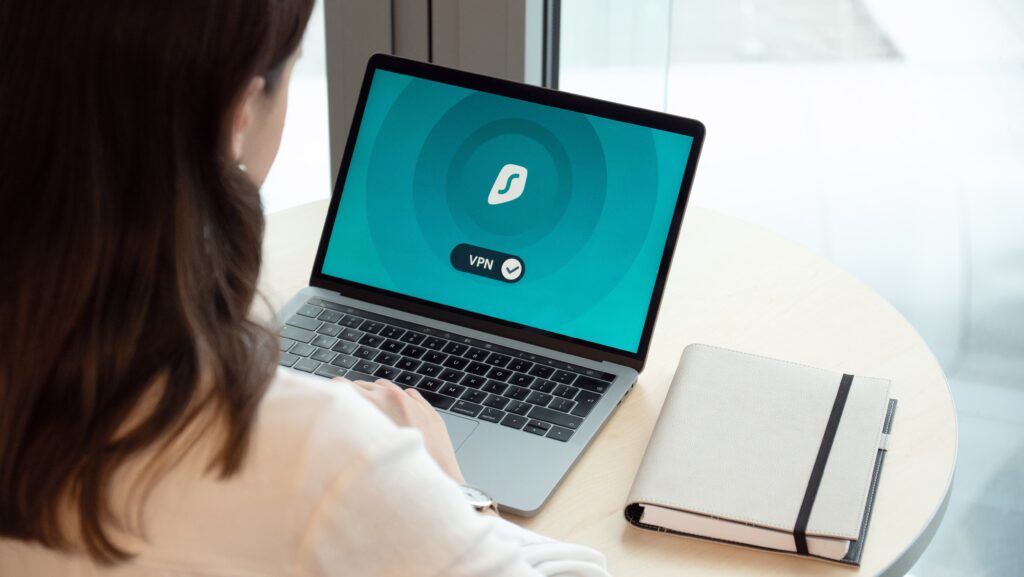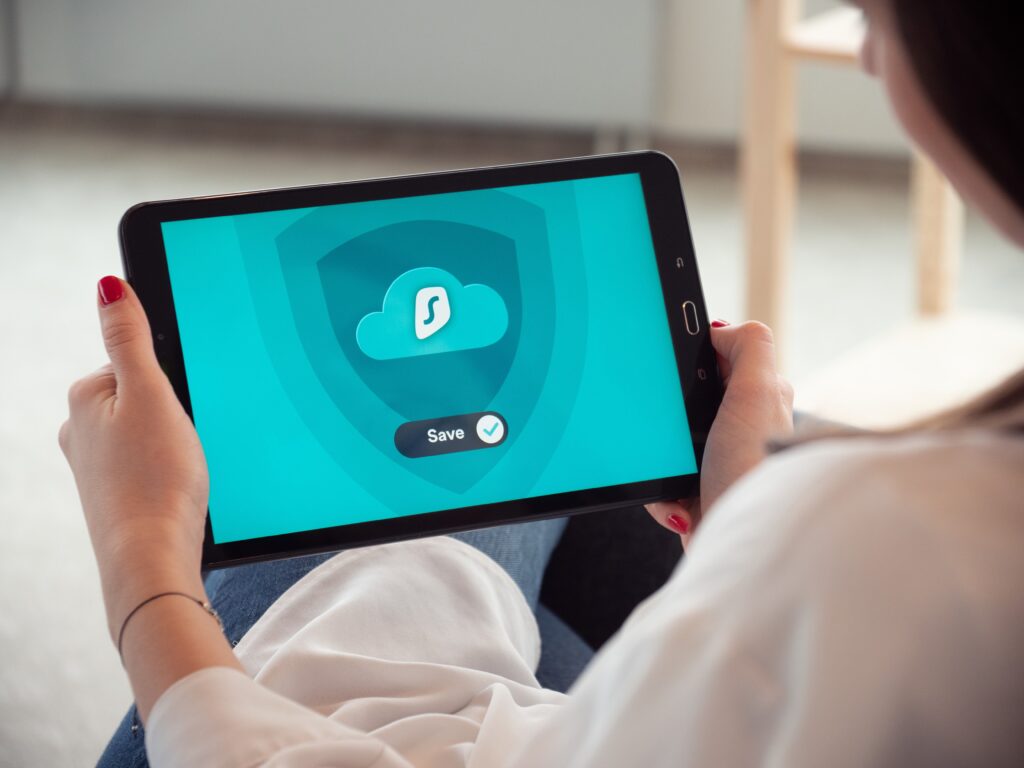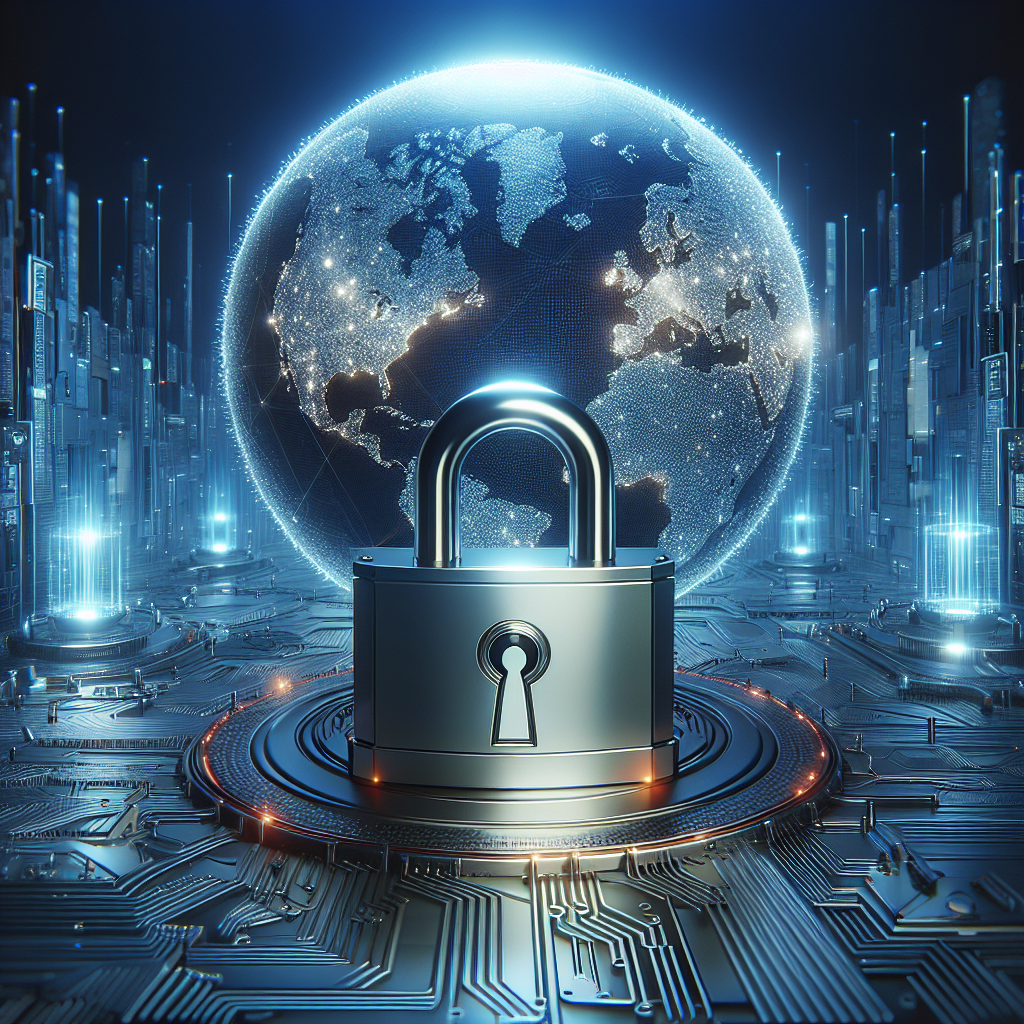In the digital age, protecting your online identity has become more important than ever. With cybercriminals constantly finding new ways to exploit vulnerabilities, it’s crucial to stay one step ahead. The article “Hacking Your Digital Identity: Protect Yourself” delves into the methods that cybercriminals use to bypass authentication systems and offers valuable insights on how to safeguard your personal information. Whether you’re a tech-savvy individual or simply someone who wants to ensure their online safety, this article provides practical tips and advice to help you navigate the complex world of cybersecurity. Don’t let your digital identity be compromised – arm yourself with the knowledge to stay secure.

Understanding Digital Identity
What is digital identity?
Digital identity refers to the online representation of an individual or organization. It includes various attributes and credentials that are unique to each entity, such as usernames, passwords, email addresses, social media profiles, and more. Digital identity is used for authentication and authorization purposes, allowing individuals and organizations to access online services and conduct transactions securely.
Why is digital identity important?
Digital identity plays a crucial role in our increasingly digital world. It is essential for tasks such as online banking, shopping, social media interaction, and accessing government services. A robust digital identity ensures that the right individuals have access to the right information and resources, while also protecting against unauthorized access and data breaches. It helps establish trust in online interactions and facilitates secure communication and transactions.
Types of digital identity
There are various types of digital identities, each serving different purposes:
- User-centric digital identity: This type of digital identity is centered around individual users and is typically created and managed by the users themselves. Examples include usernames and passwords for online accounts and social media profiles.
- Enterprise-centric digital identity: This type of digital identity is created and managed by organizations for their employees and contractors. It includes credentials such as employee IDs, access badges, and corporate email addresses.
- Government-issued digital identity: Governments often issue digital identities to their citizens for secure access to government services and documents. These identities may include biometric data, such as fingerprints or facial recognition.
- Device-centric digital identity: In the era of Internet of Things (IoT), devices also have digital identities. This helps to ensure that only authorized devices can access certain networks or services and allows for secure communication between devices.
The Risks of Digital Identity Theft
Overview of digital identity theft
Digital identity theft, also known as identity fraud, is the unauthorized use of another person’s identity or personal information to commit fraud or other malicious activities. It is a significant concern in the digital age, as cybercriminals constantly seek opportunities to exploit and manipulate personal information for financial gain.
Methods used by cybercriminals
Cybercriminals employ various methods to steal digital identities, including:
- Phishing: This involves tricking users into revealing their sensitive information, such as usernames, passwords, and credit card details, by posing as a legitimate organization or individual via email, text messages, or fake websites.
- Malware and ransomware: Malicious software can be used to gain unauthorized access to a user’s device, allowing cybercriminals to steal personal data or hold it hostage for ransom.
- Unsecured Wi-Fi networks: Using unsecured public Wi-Fi networks can expose users to identity theft, as cybercriminals can intercept data transmitted over these networks and gain access to sensitive information.
Consequences of digital identity theft
The consequences of digital identity theft can be severe and long-lasting for its victims. These include:
- Financial loss: Cybercriminals can use stolen identities to make unauthorized financial transactions, leading to financial loss and damage to credit scores.
- Fraudulent activities: Digital identities can be used to commit various fraudulent activities, such as opening new accounts, taking out loans, or making purchases in the victim’s name.
- Reputation damage: Once a digital identity is compromised, the victim’s reputation can be tarnished as cybercriminals may use it for illegal or inappropriate activities, damaging the victim’s personal and professional relationships.
- Emotional distress: Being a victim of digital identity theft can be emotionally distressing, causing anxiety, fear, and a sense of violation.

Common Vulnerabilities in Digital Identity
Weak passwords
One of the most common vulnerabilities in digital identity is weak passwords. Many users still use passwords that are easy to guess or reuse the same password across multiple accounts, making it easier for cybercriminals to gain unauthorized access.
To protect your digital identity, it is essential to create strong and unique passwords for each online account. A strong password should be at least eight characters long and include a combination of uppercase and lowercase letters, numbers, and special characters.
Phishing attacks
Phishing attacks are another significant vulnerability in digital identity. Cybercriminals often send fraudulent emails or messages that appear to be from a trustworthy source, such as a bank or an online retailer, to trick users into revealing their personal information.
To avoid falling victim to phishing attacks, it is crucial to be wary of suspicious emails or messages, especially those requesting personal information or containing links to unfamiliar websites. Always verify the legitimacy of the sender before providing any sensitive information.
Malware and ransomware
Malware and ransomware pose a considerable threat to digital identity. These malicious software can infect devices and steal personal data, such as passwords and credit card details, or encrypt files and demand a ransom for their release.
To protect against malware and ransomware, it is essential to install reputable antivirus and antimalware software on your devices. Regularly update your software and operating systems to ensure you have the latest security patches.
Unsecured Wi-Fi networks
Using unsecured Wi-Fi networks, particularly public ones, can expose users to digital identity theft. Cybercriminals can intercept network traffic on these unsecured networks and gain access to sensitive information, such as usernames and passwords.
To protect your digital identity when using Wi-Fi networks, avoid accessing sensitive information, such as online banking or shopping websites, on public networks. If you must use a public network, consider using a virtual private network (VPN) to encrypt your traffic and protect your data.
Protecting Your Digital Identity
Use strong and unique passwords
Using strong and unique passwords for each online account is crucial to protect your digital identity. Avoid using easily guessable information such as your name, birthdate, or common words. Instead, create passwords that are a combination of uppercase and lowercase letters, numbers, and special characters.
Consider using a password manager to securely store your passwords and generate unique ones for each account. This way, you can use complex passwords without the risk of forgetting them.
Enable two-factor authentication
Two-factor authentication (2FA) adds an extra layer of security to your digital identity. It requires you to provide an additional form of verification, such as a code sent to your mobile device or a fingerprint scan, along with your password to access an account.
By enabling 2FA, even if a cybercriminal manages to obtain your password, they would still need the secondary form of verification to gain access to your account. This significantly reduces the risk of unauthorized access.
Beware of phishing attempts
Phishing attempts are a common method used by cybercriminals to steal digital identities. Be cautious of emails or messages that ask for personal information, provide links to unfamiliar websites, or have a sense of urgency.
To protect yourself from phishing attempts, always verify the legitimacy of the sender before providing any sensitive information. Do not click on suspicious links and avoid downloading attachments from unknown sources.
Keep your devices and software updated
Regularly updating your devices and software is essential to protect your digital identity. Operating system and software updates often include security patches that fix vulnerabilities and protect against the latest threats.
Enable automatic updates whenever possible to ensure that your devices and software are always up to date. Additionally, regularly check for and install updates manually if automatic updates are not available.
Secure your Wi-Fi network
Securing your Wi-Fi network is crucial to protect your digital identity. Ensure that your Wi-Fi network is password protected and uses strong encryption, such as WPA2 or WPA3.
Avoid using default passwords for your Wi-Fi router and consider changing them to unique, strong passwords. Additionally, regularly check for firmware updates for your router and apply them to ensure you have the latest security features.

Securing Social Media Accounts
The importance of securing social media accounts
Securing your social media accounts is essential to protect your digital identity. Social media platforms often contain personal information and can be targeted by cybercriminals to gather information for identity theft or perform other malicious activities.
By securing your social media accounts, you reduce the risk of unauthorized access, data breaches, and misuse of your personal information. It helps safeguard your privacy and protects your online reputation.
Tips for securing social media accounts
To secure your social media accounts, consider the following tips:
- Use strong and unique passwords for each social media account.
- Enable two-factor authentication for an extra layer of security.
- Review and adjust your privacy settings regularly to control who can see your posts and personal information.
- Be cautious of accepting friend or connection requests from unfamiliar or suspicious accounts.
- Be mindful of the information you share on social media, avoiding revealing sensitive details such as your address or phone number.
- Regularly monitor your social media accounts for any suspicious activities or unauthorized access.
Protecting Personal Information Online
The importance of protecting personal information
Protecting personal information online is crucial to safeguard your digital identity. Personal information, such as your full name, address, phone number, and financial details, can be valuable to cybercriminals for identity theft and other fraudulent activities.
By protecting your personal information, you minimize the risk of identity theft, financial loss, and unauthorized access to your accounts. It helps maintain your privacy and keeps your personal data secure.
Tips for protecting personal information online
To protect your personal information online, follow these tips:
- Be cautious of sharing personal information on websites or platforms that you’re unfamiliar with or do not trust.
- Use encrypted connections when submitting personal information, such as credit card details, on websites. Look for “https://” in the URL and a padlock icon indicating a secure connection.
- Regularly review your privacy settings on social media platforms and adjust them to limit the visibility of your personal information.
- Be selective in providing personal information on online forms or surveys, only sharing what is necessary.
- Use reputable and secure online services for activities that involve personal information, such as online shopping or banking.
- Keep your devices and software updated with the latest security patches to protect against vulnerabilities that could expose your personal information.

Safe Online Shopping Practices
The risks of online shopping
Online shopping has become increasingly popular, but it also comes with risks. Cybercriminals often target online shoppers to steal personal and financial information, leading to identity theft and financial loss.
While online shopping offers convenience and accessibility, it is crucial to remain vigilant and adopt safe practices to protect your digital identity and financial information.
Tips for safe online shopping
To practice safe online shopping, consider the following tips:
- Shop from reputable and trusted websites. Look for reviews and ratings before making a purchase.
- Ensure that the website uses secure connections (https://) when entering personal and payment information.
- Avoid making online purchases on public Wi-Fi networks, as they may not be secure. Use a trusted network or a mobile data connection instead.
- Regularly monitor your bank and credit card statements for any unauthorized transactions.
- Be cautious of unsolicited emails or pop-ups claiming to offer discounts or promotions. These may be phishing attempts to steal your personal information.
- Use a secure and unique password for your online shopping accounts and enable two-factor authentication when available.
Securing Your Email Account
The importance of email security
Email accounts are a prime target for cybercriminals, as they often contain sensitive personal information and serve as a gateway to other online accounts. Securing your email account is crucial to protect your digital identity and prevent unauthorized access.
By securing your email account, you protect your personal and financial information, as well as prevent the spread of malware and phishing attempts through your contacts.
Tips for securing your email account
To secure your email account, follow these tips:
- Use a strong and unique password for your email account. Avoid using common words or easily guessable information.
- Enable two-factor authentication (2FA) for an additional layer of security.
- Regularly monitor your email account for suspicious activities, such as unexpected password reset notifications or unfamiliar emails in your sent folder.
- Be cautious of opening email attachments or clicking on links from unknown or suspicious senders.
- Use reputable antivirus and antimalware software to scan email attachments and protect against email-borne threats.
- Avoid sharing sensitive information, such as passwords or financial details, via email. Instead, use encrypted messaging platforms or secure file-sharing services.

Protecting Your Financial Information
The vulnerabilities of financial information
Financial information, such as credit card numbers, bank account details, and social security numbers, are highly sought after by cybercriminals. Once they gain access to this information, they can carry out financial fraud and identity theft.
Due to the sensitive nature of financial information, it is crucial to protect it and minimize the risk of unauthorized access or exposure.
Tips for protecting your financial information
To protect your financial information, consider the following tips:
- Only provide financial information on secure and trusted websites. Look for “https://” in the URL and a padlock icon indicating a secure connection.
- Regularly monitor your bank and credit card statements for any unauthorized transactions. Report any suspicious activity immediately.
- Be cautious of unsolicited phone calls or emails requesting your financial information. Legitimate organizations will not ask for such details over the phone or email.
- Use secure and unique passwords for your financial accounts, and enable two-factor authentication for added security.
- Securely store physical copies of financial documents, such as bank statements or tax forms, in a safe place.
- Shred or destroy any sensitive financial documents before disposal to prevent unauthorized access.
Importance of Regular Monitoring
The benefits of regular monitoring
Regular monitoring of your digital identity is crucial to detect and mitigate any potential threats or vulnerabilities. By staying vigilant and proactive, you can quickly identify any unauthorized access, suspicious activities, or potential security breaches.
Regular monitoring helps protect your digital identity by allowing you to take prompt action, such as changing passwords, notifying authorities, or freezing accounts if necessary. It provides peace of mind and helps maintain the security of your personal and financial information.
Tools and resources for monitoring your digital identity
Numerous tools and resources are available to help you monitor your digital identity and detect any potential security risks. These include:
- Credit monitoring services: These services monitor your credit reports for any unusual activity or changes, such as new accounts or credit inquiries, which could indicate identity theft.
- Identity theft protection services: These services help monitor your personal information online, including the dark web, to detect any unauthorized use or exposure.
- Security software and apps: There are various security software and apps available that can help detect and mitigate potential threats on your devices, such as antivirus and antimalware programs.
- Online account notifications: Many online platforms and financial institutions offer notifications or alerts for account activities, such as logins from new devices or large transactions. Enable these notifications to stay informed about any unusual account activities.
By utilizing these tools and resources, you can enhance your digital identity protection and promptly respond to any potential threats or vulnerabilities.
In conclusion, understanding digital identity is crucial in today’s digital age. By recognizing the risks of digital identity theft, understanding common vulnerabilities, and implementing best practices to protect your digital identity, you can ensure the security of your personal and financial information online. Regular monitoring and the use of available resources further enhance your protection, allowing you to stay one step ahead of cybercriminals. Stay vigilant, adopt safe online practices, and prioritize the security of your digital identity to enjoy a safe and secure online experience.
